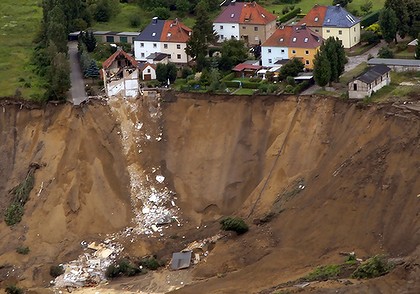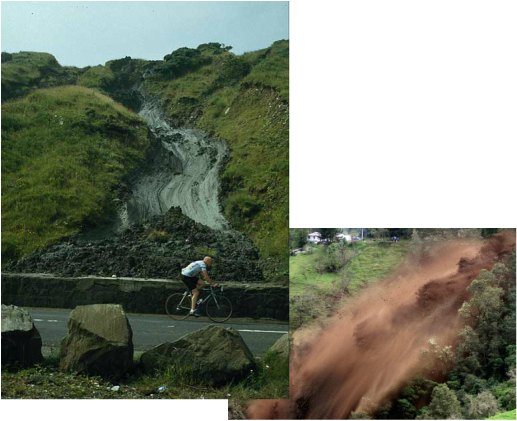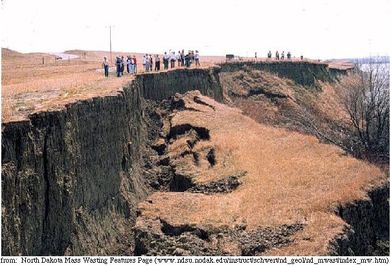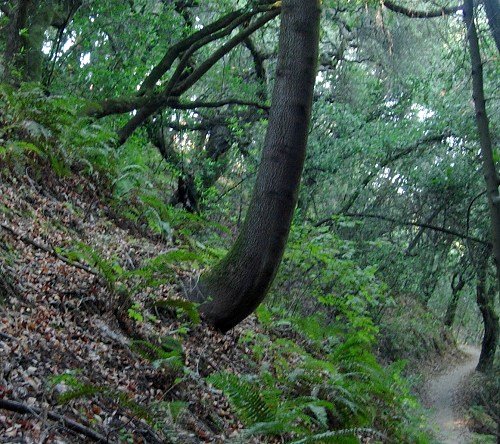Mass Movement
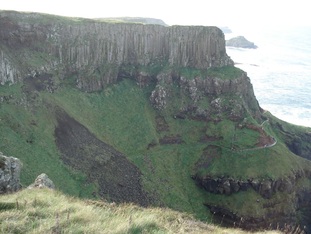
Mass Movement is any one of several processes
that move sediment downhill. The different types
of mass movement include landslides, mudflows,
slump, and creep. Gravity is the number one cause
of mass movement. Mass movements can vary from
being rapid or super slow it all depends on the type.
that move sediment downhill. The different types
of mass movement include landslides, mudflows,
slump, and creep. Gravity is the number one cause
of mass movement. Mass movements can vary from
being rapid or super slow it all depends on the type.
Landslides
Mudflows
|
Mudflows can be very dangerous.
Mudflows are a mixture of water, rock, and soil rapidly flowing downhill. Mudflows usually occur after a heavy rain in a normaly dry place. Mudflows can contain as high as 60 percent of water. Sometimes when soil has lots of clay with a high water content, mudflows can occur even on a very gentle slope, under certain conditions clay soils turn into liquid making it easier to flow downhill. |
Slump
|
A slump is when a mass of rock and soil attached to an even bigger mass of rock and soil suddenly slip down a slope. A slump occurs when water soaks the bottom of a slope and erodes it until that part of the slope finally collapses. A slump is different than a landslide because unlike the landslide a slump all moves down the slope at the same time in one huge mass.
|
Creep
|
Creep is a very slow process where rock and soil move very slowly downhill. Creep can even occur on gentle slopes. Creep occurs when water freezes and thaws on cracked layers of rock underneath the soil. When creep occurs it is so slow that you can barely notice it. After a creep goes through the land it causes trees, telephone poles, and fence posts to have bends and creepy curves.
|
